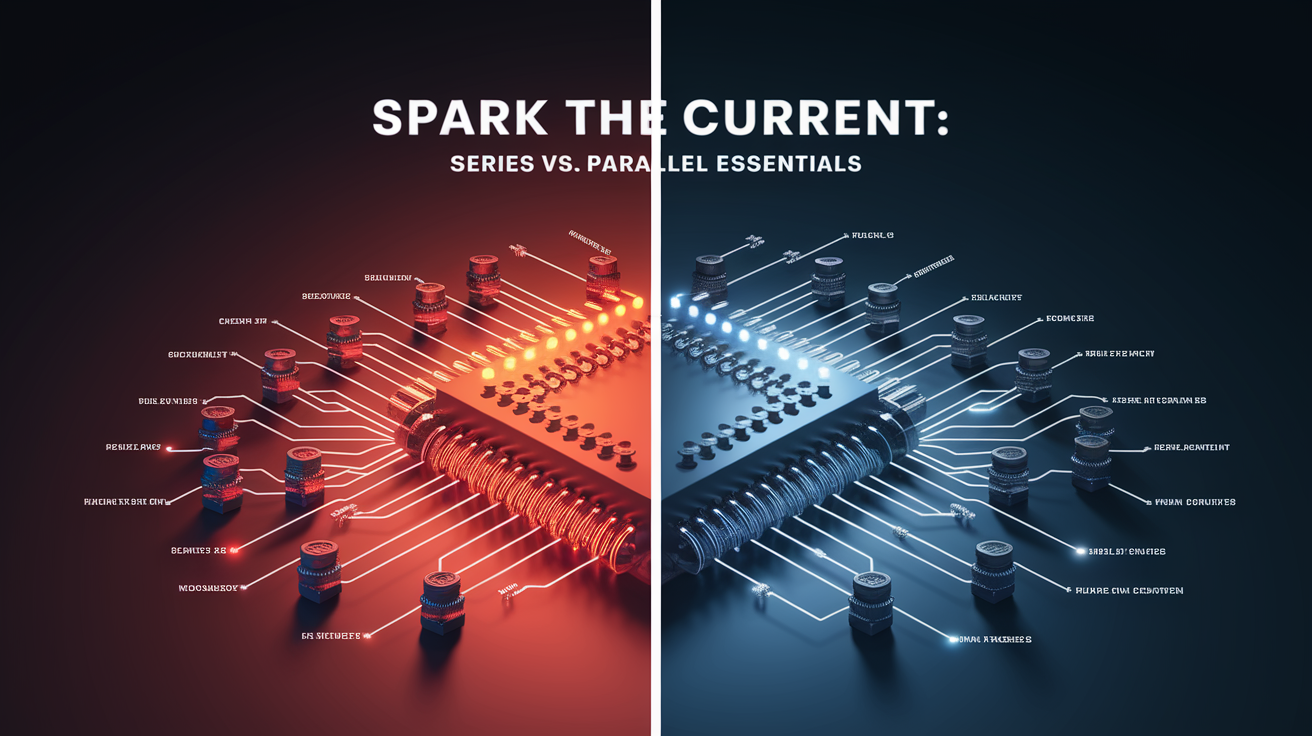Solar Panel Series-Parallel Wiring Made Simple
Understanding how to wire solar panels correctly transforms a collection of individual components into an efficient, reliable energy system. Whether you’re designing a residential rooftop installation or an off-grid setup, mastering series and parallel connections directly impacts your system’s performance, safety, and cost-effectiveness.
Spark the Current: Series vs. Parallel Essentials
Solar panels connect through two fundamental wiring methods that dramatically affect your system’s electrical characteristics. In series wiring, panels link positive-to-negative, creating a chain that increases total voltage while maintaining constant current. This configuration adds individual panel voltages together—three 20V panels in series produce 60V output.

Parallel wiring takes the opposite approach. By connecting positive terminals to positive terminals and negative to negative, parallel configurations increase current while maintaining the same voltage as a single panel. Three 20V, 5A panels wired in parallel still output 20V but deliver 15A total current.
These electrical characteristics directly influence equipment selection and system design:
- Series connections: Higher voltage, constant current, fewer cables required
- Parallel connections: Higher current, constant voltage, increased wiring complexity
- Series-parallel combinations: Customized voltage and current levels for specific applications
Voltage Boost: Mastering Series Connections
Series wiring excels when your system requires higher voltages to meet inverter input requirements or reduce transmission losses over long cable runs. This configuration proves particularly valuable for grid-tied systems where inverters often demand 300V or higher input voltages.
The key advantage lies in simplicity—series connections require fewer cables and simpler wiring layouts. However, this method demands careful attention to current matching. All panels in a series string must share the same current rating, as the weakest panel limits the entire string’s output.

Critical considerations for series wiring include:
- Monitoring total voltage to prevent exceeding equipment limits
- Using panels with identical current specifications
- Understanding that shading on one panel affects the entire string
- Implementing bypass diodes to minimize shading impacts
Series configurations offer technical advantages for inverter compatibility but require careful system design to handle voltage variations and potential shading issues.
Current Surge: Mastering Parallel Connections
Parallel wiring delivers increased current capacity while maintaining consistent voltage levels, making it ideal for battery charging applications and systems requiring higher amperage output. This configuration provides superior reliability since each panel operates independently—if one panel fails or becomes shaded, others continue producing power.
The trade-off comes in increased complexity and cost. Parallel systems require thicker cables to handle higher currents safely, along with additional components like branch connectors and combiner boxes. Wire gauge selection becomes critical, as inadequate sizing can create dangerous heating and voltage drops.

Essential parallel wiring requirements:
- Matching panel voltages for optimal efficiency
- Proper wire gauge sizing for increased current loads
- Branch connectors for safe current combining
- Individual fusing for each panel string
While parallel wiring increases material costs, it offers superior system resilience and easier troubleshooting when individual panels require maintenance or replacement.
Best of Both: Designing Series-Parallel Arrays
Series-parallel combinations unlock the flexibility to customize both voltage and current output, making them particularly valuable for off-grid applications like RVs, tiny houses, and remote installations. This hybrid approach allows designers to meet specific equipment requirements while optimizing system performance.
Series-parallel configurations balance voltage and current optimization by creating multiple series strings connected in parallel. For example, connecting two series strings of three panels each provides the voltage boost of series wiring with the current increase of parallel connections.

Design strategies for series-parallel arrays:
- Calculate total voltage and current requirements first
- Group panels into identical series strings
- Connect series strings in parallel for final configuration
- Ensure all series strings have matching voltage outputs
- Size components for combined current loads
This approach requires more complex planning but delivers precise control over system electrical characteristics, enabling optimization for specific charge controllers, inverters, and battery configurations.
Safety and Sizing: Practical Tips
Proper safety measures and component sizing ensure reliable, long-term system operation while protecting both equipment and personnel. Wire gauge selection proves critical—undersized conductors create dangerous heating and voltage drops that reduce system efficiency.
Essential safety components include fuses or circuit breakers on positive leads to protect against overloads and short circuits. Parallel configurations require individual protection for each string, while series connections typically need protection at the string level.
Key safety and sizing considerations:
- Wire gauge: Size conductors for 125% of maximum expected current
- Fusing: Install appropriate fuses on all positive conductors
- Labeling: Clearly mark all connections and voltages
- Polarity verification: Use multimeters to confirm correct connections
- Equipment limits: Never exceed maximum voltage/current ratings
Regular system monitoring helps identify potential issues before they become safety hazards or cause equipment damage. Proper installation practices and quality components ensure decades of reliable solar energy production.
Shine Bright: Final Thoughts on Solar Wiring
Mastering solar panel wiring configurations empowers you to design systems that precisely match your energy needs while maximizing efficiency and reliability. Series connections deliver higher voltages for grid-tied applications, parallel wiring provides increased current and system resilience, while series-parallel combinations offer customized solutions for specialized requirements.
Success depends on careful planning, proper component sizing, and adherence to safety practices. Whether you’re installing a simple off-grid setup or a complex residential array, understanding these fundamental wiring principles ensures optimal system performance and long-term value from your solar investment.







